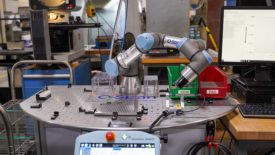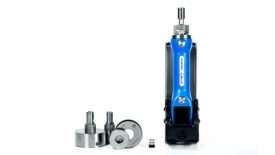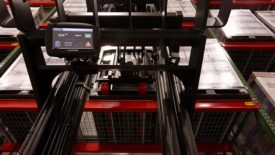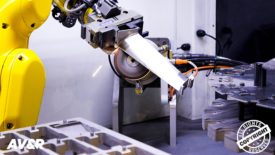ARTICLES
Software
There’s a growing understanding that not all manufacturing or production jobs are the same, and thus, the application of FMEA should vary accordingly.
Read More
Software
How to Sharpen Your FMEA Skills, Part 1
Regular use of FMEA leads to continuous improvements in processes and products. By proactively addressing potential issues, it enhances reliability, safety, and overall quality.
April 3, 2024
Quality in Automation | Automation
Leveraging automation for quality gains
As automation simplifies and enhances manufacturing processes, quality control staff see significant career advantages, making a shift towards more efficient, consistent, and data-driven production environments.
March 29, 2024
Measurement
Maximizing Precision: How to Care for and Integrate Your Handheld Gages
Quality control is crucial for meeting high product standards, and handheld gages are key to achieving such precision. But how exactly do these tools ensure accurate measurements?
February 19, 2024
Automation
How Modern Warehouses are Redefining Efficiency Through Automation — Part 2
Insights into how AI, IoT, and blockchain are revolutionizing warehouses, enhancing transparency, and optimizing operational efficiencies.
January 17, 2024
Automation
Skilled Workers Pivot in an Automated Age — Part 1
Transitioning from repetitive tasks to specialized roles, with training as the key.
January 16, 2024
Quality 101
How Technology and Data Analytics are Revolutionizing Auditing — Part 2
Auditing is undergoing a paradigm shift, influenced by the rapid advancements in technology and data analytics. As organizations embrace more complex, digital processes, how they’re audited is changing.
December 13, 2023
Quality 101
Auditing 101: Understanding Audits and Tips to Prepare — Part 1
Audits might seem like just another box to check off, but understanding them can help you approach them effectively.
December 6, 2023
Vision & Sensors | Vision & Sensors 101
Part 2: The Impact of Miniaturization on Machine Vision Lenses
The push towards miniaturization is reshaping numerous industries, influencing design decisions and fostering innovation.
November 20, 2023
Vision & Sensors | Machine Vision 101
Part 1: AI and Machine Vision Lenses: Enhancements, Trends, and Evolution
The importance of quality image acquisition cannot be stressed enough.
November 14, 2023
Get our new eMagazine delivered to your inbox every month.
Stay in the know with Quality’s comprehensive coverage of the manufacturing and metrology industries.
SIGN UP TODAY!Copyright ©2024. All Rights Reserved BNP Media.
Design, CMS, Hosting & Web Development :: ePublishing









